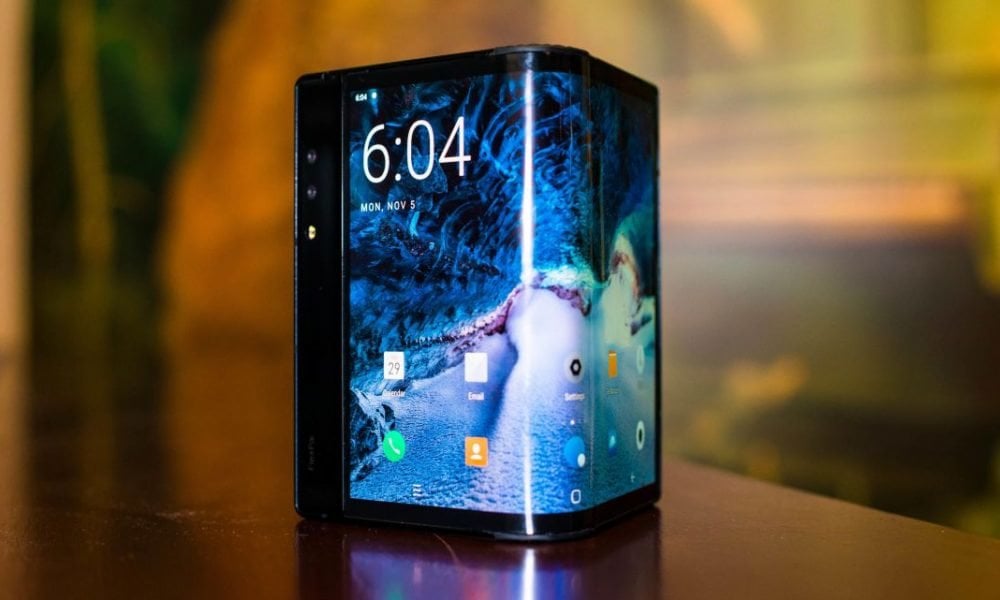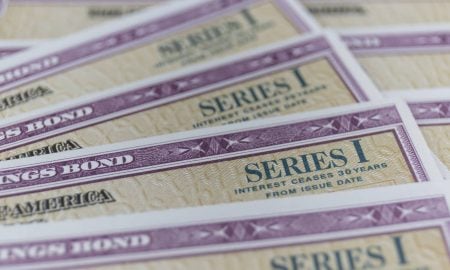
Samsung Bending All Rules with Its Craziest Smartphone Concept to Date

If you thought Apple’s iPhone X was a game-changer in the smartphone industry, wait till you meet Samsung’s new bendy pocket-sized device (rumoured to be called Galaxy F), which is here to steal iPhone’s thunder with its unique foldable screen.

Samsung recently held its annual developer conference in SF where it unveiled a futuristic smartphone concept under the name of Galaxy F
New Bendable Galaxy F
Samsung recently held its annual developer conference in SF where it unveiled a futuristic smartphone concept under the name of Galaxy F. The device fits perfectly in your pocket when folded, but it can be unfurled to reveal a much larger, 7.3 inch flexible screen that is built to provide an entertainment experience like no other. The flexible display is great for watching videos, reading or using multiple apps at the same time. When unfolded, the phone mimics a full-sized tablet that you can carry in your pocket wherever you go.
Samsung’s Senior Vice President, Justin Denison, said that even though the phone is just a concept right now, it could become a reality some time the future, but the company has yet to disclose a timeline for its release or the name of the device.
Denison only gave the audience a sneak peek at the phone for 20 seconds before quickly tucking it out of sight. This isn’t the first time Samsung is attempting to make a bendable phone, but there’s something about the Galaxy F that indicates that the trend is here to stay this time. Could the new breakthrough technology become the Galaxy maker’s best shot at staying competitive in a declining smartphone market?
After the conference Google also announced that it will make adjustments to its Android OS to support the UI on a bendable screen. The search engine giant vowed to provide a seamless experience for Galaxy F and other android foldable devices to come in the future.

In 2011, Samsung first introduced the concept of a flexible phone with a creaseless display and a dual screen with the intention of elevating the smartphone experience to the next level
A Failed Design
For years Apple and Samsung have battled it out for the most innovate handset on the market, pushing the boundaries of display technology by shrinking bezels, taking out the home button, curving the screen edges and compacting the pixels. But the new folding phone seems to be taking things too far, raising more questions than providing answers.
In 2011, Samsung first introduced the concept of a flexible phone with a creaseless display and a dual screen with the intention of elevating the smartphone experience to the next level. The intention behind the foldable screen was to give modern smartphone devices more real estate for multitasking, watching television and reading. The advantage of the new Galaxy F is that it will be able to merge two large-sized smartphone screens into one, creating a cross between your average pocket device and a full-sized tablet.
The dream for a bendable phone has been around for many years now, with companies like LG, Huawei and even Apple racing to become the first smartphone maker in the history to introduce such an innovative technology to their devices. Some of them have even tried, and failed, to turn this dream into reality, with Royole being the most recent name on the list to take on the trend with its new smartphone called FlexPai.

Having twice the display of a regular smartphone device, a dual-screen bendable results in additional strain on the battery
Drawbacks of Dual-Screen Phones
But so far, none of the prototypes have been able to take off in the market, mainly due to the compromises that come with designing a phone with dual screens. Having twice the display of a regular smartphone device results in additional strain on the battery. Moreover, most apps aren’t optimized to work on dual-screen phones which is one of the reasons why Samsung’s previous attempts to make a foldable phone never managed to create a hype among tech enthusiasts.
But times have changed now, and Samsung believes that the rapid advancement in display technology has made it possible to add an additional ultra-thin display on top of a regular one to resemble the design of a flip phone from the 1990’s – nostalgia, anyone?
Denison also said that Samsung has made a dramatic upgrade to its UI to accommodate an additional screen on its upcoming Galaxy device, which can show 3 different apps on the screen at the same time through the ‘multi-active window’ feature. But how will the new phone be able to stack up to some of Samsung’s biggest competitors? And will there be demand in the market for such an outrageous design concept that has failed so many times before? Only time will tell.
More in Business
-
Why American Consumers Are Falling Behind on COVID-Era Debt
When the world was grappling with the health crisis brought on by COVID-19, the U.S. economy faced an equally formidable challenge:...
November 27, 2023 -
Dr Dre and Ex-Wife Nicole Young Finalise $100m Divorce Settlement
After months of legal proceedings, Dr Dre, the legendary rapper, producer, and businessman, officially brought his tumultuous divorce from ex-wife Nicole...
November 22, 2023 -
5 Tell-Tale Signs That It Is Time to Say Goodbye to Your Current Job
Are you feeling like your job is more like a ball and chain than a fulfilling career? The daily grind, the...
November 19, 2023 -
WWE Signs $1.4 Billion Broadcasting Contract for SmackDown
In an explosive turn of events, World Wrestling Entertainment (WWE) has just unleashed some earth-shattering news for its legions of fans....
November 9, 2023 -
Navigating the Mortgage Maze as Interest Rates Take a Historic Leap
The U.S. housing market is nothing short of a dynamic entity. It evolves, reacts, and sometimes, just like the current real-estate...
November 3, 2023 -
Celebrity Couples Where the Woman Has a Higher Net Worth
In a world where gender roles and financial dynamics constantly shift, it’s not unusual to find celebrity couples where the woman...
October 27, 2023 -
Why the Gender Pay Gap Could Be Worsening
Picture this: Two college students, Alex and Charlie. Both are bright, have the same interests, and are ready to embrace the...
October 19, 2023 -
JC Penney’s Remarkable $1 Billion Revival Plan
In a remarkable turnaround, JC Penney unveiled a bold $1 billion revival plan, breathing new life into a brand that faced...
October 12, 2023 -
Shattering the American Dream: Mortgage Rates, Inflation & Cost of Living
You know that feeling when you are dreaming of something you have wanted for so long, only to watch it vanish...
October 6, 2023















You must be logged in to post a comment Login